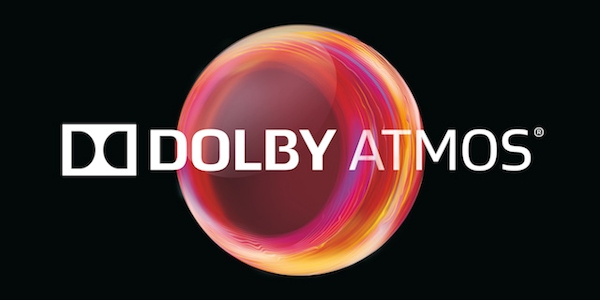[This story from The Verge includes some interesting impressions comparing standard and Dolby Atmos audio for different VR content; only a step forward, but it’s (exciting) early days. –Matthew ]
Dolby dives into virtual reality with Atmos surround sound for VR
By Bryan Bishop
on February 26, 2015
As the momentum behind virtual reality slowly continues to build we’re seeing more traditional movie companies dip their toes into the medium. Today Dolby is announcing a partnership with Jaunt that will bring its Atmos surround sound technology to the world of VR — and it may turn out that virtual reality is even a better fit for the technology than the movie theaters it was originally designed for.
Jaunt produces short virtual reality movies for the Oculus Rift and Google Cardboard, using its own custom camera rig to capture visuals across a near-360-degree field of view. The user then watches the action play out, able to look around anywhere they choose. Their titles, like the Paul McCartney “Live and Let Die” live performance short or the monster movie Kaiju Fury, aren’t interactive in the traditional sense but they are immersive, and Jaunt CEO Jens Christensen says sound is vital.
“We’ve realized that audio plays a huge component in terms of delivering a compelling and truly transportive VR experience,” Christensen told me during a recent briefing. “We actually think audio is maybe 50 percent of the whole experience.” To that end, the company has previously relied on its own solutions, using a special tetrahedral microphone array to capture audio when shooting and delivering a 360-degree soundscape that matches the viewer’s head movements. But whether it’s sound effects or other elements, VR movies need more than what’s simply captured on set, and the ability to place those different elements accurately is integral to selling the overall illusion. That’s where Christensen says there are real advantages with Atmos.
To understand why, we need to take a brief look back at how Dolby Atmos actually works. Whereas Dolby’s older 5.1 and 7.1 surround sound solutions broke audio down into a discrete set of channels, Atmos is “object based.” What that essentially means is that each sound is treated as an individual object that the mixer can place anywhere in a virtual theater — including right above you — with the Atmos system itself then figuring out how to recreate that effect on the fly based upon the number of speakers in a given room. A thunder crash doesn’t get specifically thrown into the back left channel, for example; it’s placed at a specific point behind your left shoulder, and the system takes it from there.
It works the same way on mobile devices, where Atmos rejiggers the mix in real time into a binaural version for headphones. Given that Jaunt’s VR movies are essentially virtual rooms unto themselves to begin with, the object-oriented system is a perfect match. The result, says Christensen, is the ability to precisely place audio cues wherever the company desires. “That’s very powerful, especially in VR.”
To start off, the company will be releasing Atmos-enabled versions of three of its existing Google Cardboard Android apps: Kaiju Fury, the Paul McCartney piece, and the horror short Black Mass. I was able to try beta builds of each on a Nexus 5, back to back with the original releases, and there was a marked difference between the two. Black Mass — which puts you in the shoes of someone that’s been kidnapped for a Satanic ritual — fared best, really selling the illusion of being inside a garage while rain pounded overhead. More importantly, it was able to use audio to misdirect my attention at key moments and generate some real scares. I found the current version of Black Mass to be somewhat amusing; the Atmos version was unnerving.
The McCartney piece and Kaiju Fury served better as tech demos: yes, audio was more specifically laid out around me, but I can’t say I felt the experience was necessarily stronger for it. And that’s the real takeaway here: VR is so young that companies are still developing the basic tools that will allow for the creation of powerful experiences. And while each new game or narrative short is a step forward, it’s rare that one comes along that feels like a real game changer.
But having tools like Atmos-enabled VR at the ready is part of what will allow that creative evolution to take place. Joel Susal, Dolby’s director of augmented reality and virtual reality initiatives, said the company is “deeply committed” to VR, and while it’s only discussing the Jaunt partnership for now he said Dolby is looking to bring its technologies to a number of different partners.
For end users, however, all that’s going to matter are the experiences themselves. Jaunt’s first Atmos-enabled apps will launch later this year for a handful of Android devices, with more titles — and more supported phones — slated to follow thereafter.
